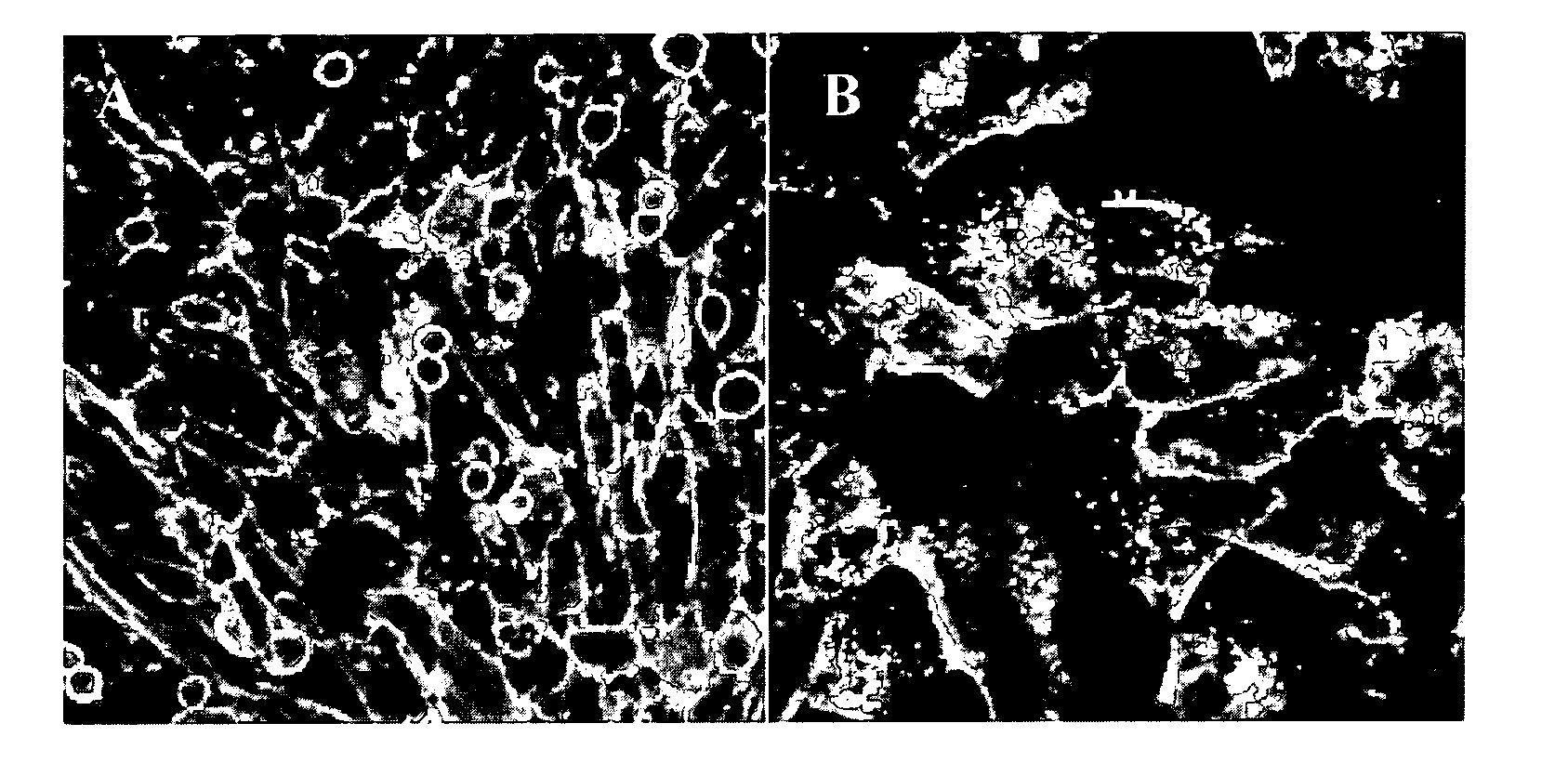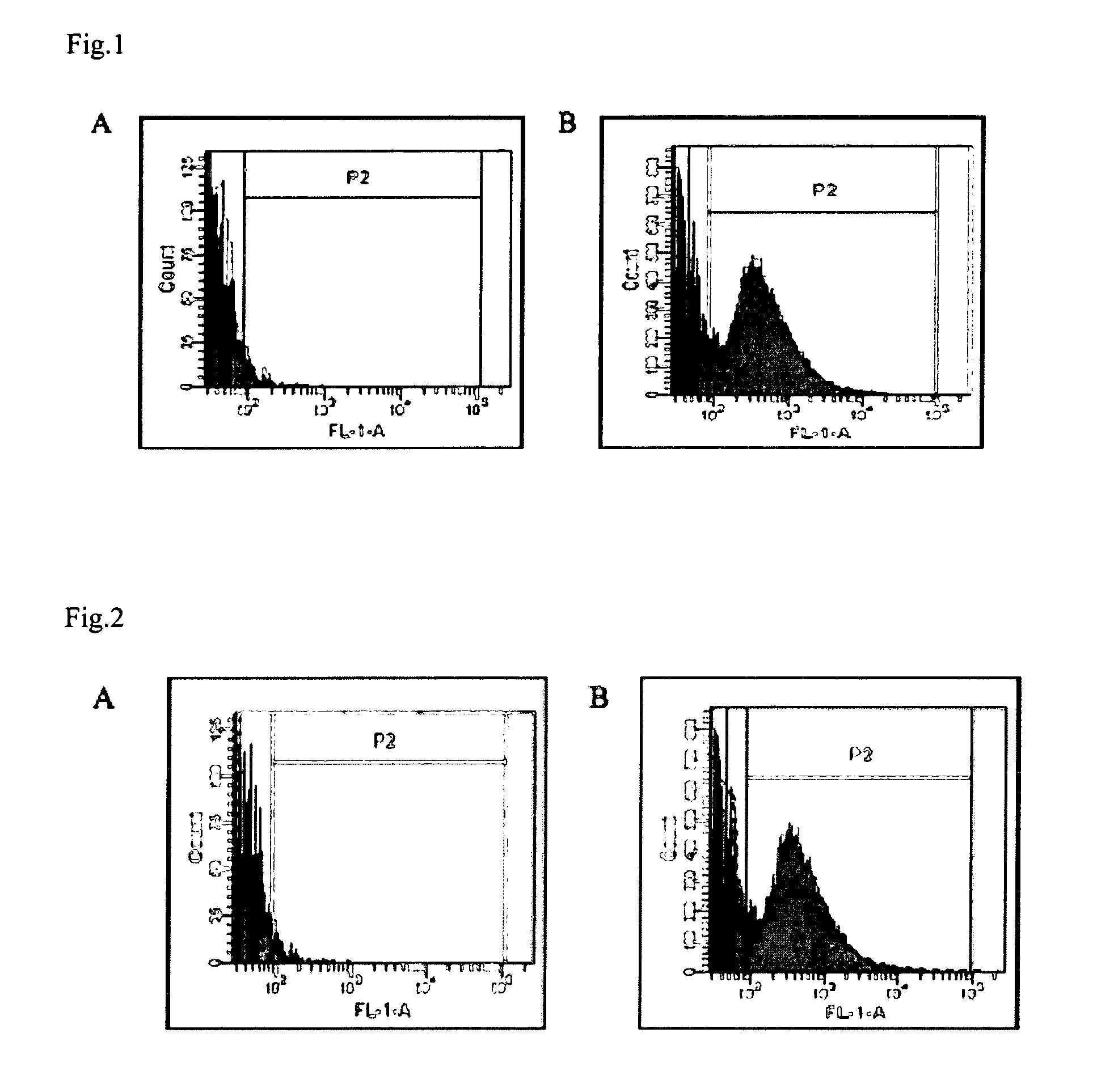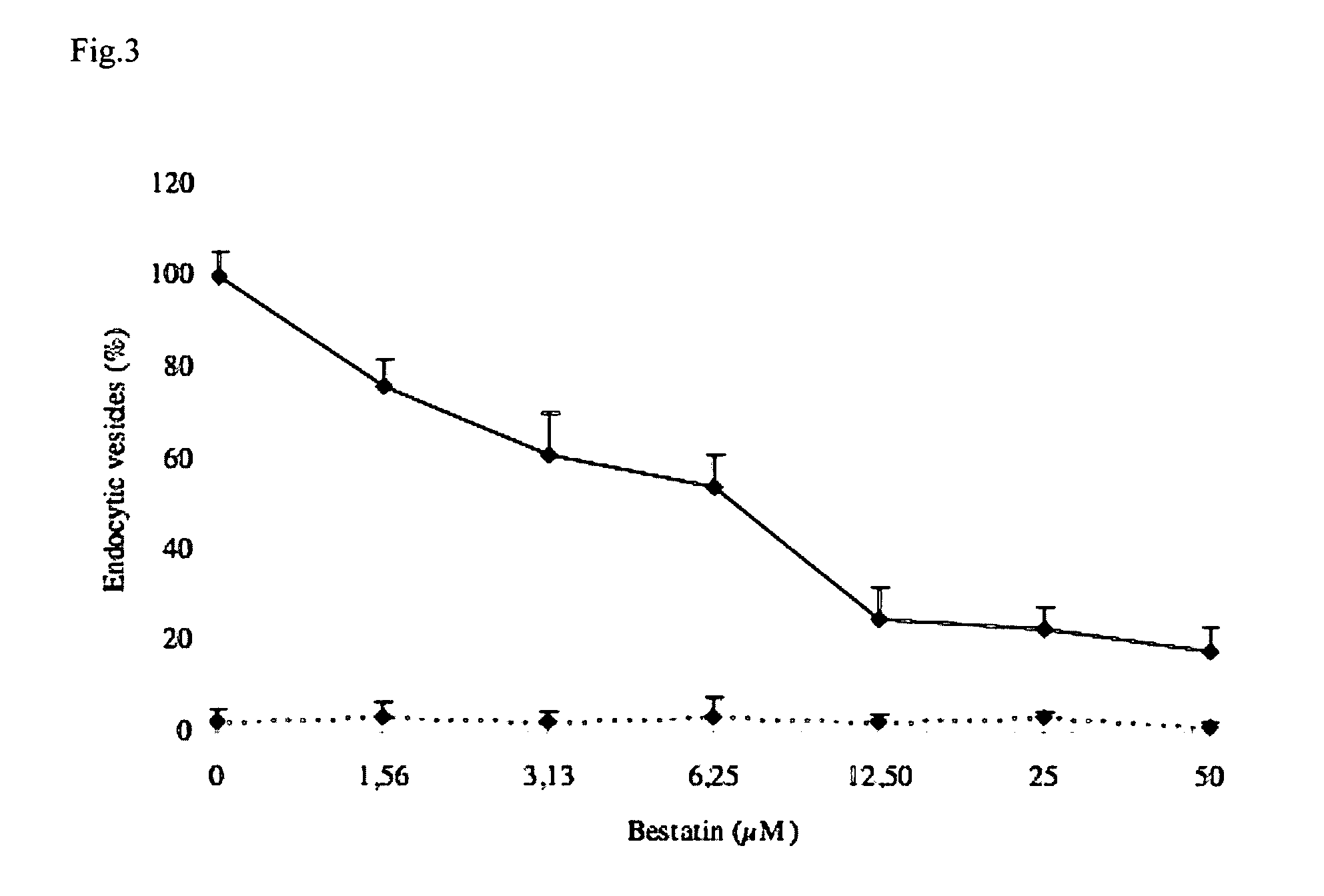Mucosal membrane receptor and uses thereof
- Summary
- Abstract
- Description
- Claims
- Application Information
AI Technical Summary
Benefits of technology
Problems solved by technology
Method used
Image
Examples
example 1
Identification of Aminopeptidase N as a Potential F4 Receptor
[0121]Methods
[0122]In Vitro Villous Adhesion Assay for F4R Characterisation of the Piglets
[0123]Thirteen pigs from 13 different sows and 13 different boars of 5 different pig farms in Northern Belgium were tested. In order to determine the presence or absence of the F4R on brush borders of small intestinal villous enterocytes, an in vitro villous adhesion assay was performed as described by Van den Broeck (1999). Adhesion of more than 5 bacteria per 250 μm villous brush border length was noted as positive. 89
[0124]F4 Purification and Labelling of F4 with Fluorescein 91
[0125]F4 fimbriae were purified as described by Van den Broeck (1999). Briefly, fimbriae were isolated by homogenizing the bacterial suspension of strain E. coli GIS26 (serotype O149:K91, F4ac+, LT+STa+STb+) using an Ultra Turrax (Janke & Kunkel, IKA Labortechnik, Staufen, Germany), followed by a purification using 2 centrifugation steps (20,000×g, 40 min, 4°...
example 2
Expression of APN in Enterocytes of Pig, Mice, Sheep and Men
[0180]Methods
[0181]Preparation and Pre-Incubation of Pig Jejunum Loops
[0182]Three F4-seronegative pigs, (with SS or SR susceptible genotype in the DNA-based marker test for XbaI polymorfims in the mucin 4 gene (Jørgensen et al., 2004) were used in the present study. Five days postweaning, the pigs were laparotomized, under intramuscular anesthesia with tiletamine and zolazepam (Zoletil 100; Virbac S. A, Carros, France) supplemented with 2% xylazine (Xyl-M1; VMRD, Arendonk, Belgium) (0.22 ml / kg) after an overnight fast. In F4R+ pigs (Belgian Landrace_English Landrace), isolated loops of approximately 5 cm in length were prepared in the jejunum (small intestine) without Peyerse Plates (PP) (jejunal loops) (Moon et al., 1966). Care was taken to minimize surgical trauma and to maintain an adequate blood supply to the ligated segments. In mid-jejunum, 4 loops were created which were injected with[0183]buffer (5 ml PBS containing...
example 3
Binding of F4ab, F4ac and F4ad to Porcine APN
[0216]We demonstrated binding of F4ac fimbriae of enterotoxigenic E. coli to porcine APN from brush border enterocytes (Rasschaert, 2008). However, 3 serological variants of F4 fimbriae have been demonstrated: F4ab, F4ac and F4ad. Binding has been demonstrated to glycoproteins and glycolipids of different molecular weights as reviewed in Van den Broeck et al. (2000). When the three variants of F4 (F4ab, F4ac, and F4ad) are considered, six porcine phenotypes can be distinguished with regard to the brush border adhesiveness as represented in table 3: phenotype A binds all three variants, phenotype B binds F4ab and F4ac, phenotype C binds F4ab and F4ad, phenotype D binds F4ad, phenotype E binds none of the variants, and phenotype F binds F4ab. Therefore the aim of the present study was to determine binding of the 3 F4 variants to porcine APN, which we identified as one of the glycoproteins recognized by F4ac.
TABLE 3Phenotypes with regard to ...
PUM
| Property | Measurement | Unit |
|---|---|---|
| Atomic weight | aaaaa | aaaaa |
| Atomic weight | aaaaa | aaaaa |
| Atomic weight | aaaaa | aaaaa |
Abstract
Description
Claims
Application Information
 Login to View More
Login to View More - R&D
- Intellectual Property
- Life Sciences
- Materials
- Tech Scout
- Unparalleled Data Quality
- Higher Quality Content
- 60% Fewer Hallucinations
Browse by: Latest US Patents, China's latest patents, Technical Efficacy Thesaurus, Application Domain, Technology Topic, Popular Technical Reports.
© 2025 PatSnap. All rights reserved.Legal|Privacy policy|Modern Slavery Act Transparency Statement|Sitemap|About US| Contact US: help@patsnap.com



